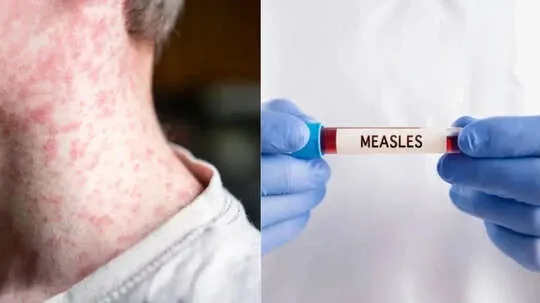Health officials declared the outbreak over after more than 42 days without a new case, a cut-off based on the time between when a person is exposed and when they get sick. The infection began spreading in January this year when a cluster of cases was reported in Gaines County, near the border with New Mexico, which had one of the lowest vaccination rates in the state.
With a total of 762 cases recorded, more than two-thirds of infections were among children, according to the Texas Department of State Health Services (DSHS). More than 100 were hospitalised.
Apart from Mexico, infections also spread to other parts of the state, along with neighbouring New Mexico, where one unvaccinated person died.
What is measles?
Measles is a vaccine-preventable disease that had been considered eradicated in the United States as of 2000, which means there was no spread and new cases were those contracted only from abroad. However, due to a decline in vaccinations, a growing number of states no longer reported rates consistent with herd immunity, and infections returned. The last outbreak of a similar scale occurred in 2019, when 1,274 cases were confirmed across the country.
Measles is highly contagious and is caused by a virus that leads to widespread rash and flu-like symptoms. However, doctors say it is not just a rash and can make you severely ill, causing life-threatening complications like brain inflammation and pneumonia.
It can also make you more likely to get sick with other infections.
Signs and symptoms of measles
A few signs and symptoms of measles include:
- High fever
- Barky cough
- Red or bloodshot eyes
- Runny nose
- Feeling tired and fatigued
- Red spots with white centers in your mouth, also known as Koplik's spots
- Rashes all over the body
- Digestive issues like diarrhoea, stomach pain, and vomiting
- Sore throat
- Muscle pain
- Headache
According to experts, it takes time for the measles symptoms to appear all at once. It starts with a fever, cough, runny nose, and red eyes. Thereafter, Koplik's spots appear two to three days later and fade when the rash begins. Doctors say the rash appears three to five days after your initial symptoms start.
What causes measles, and how does it spread?
Measles is caused by the virus genus Morbillivirus - an airborne disease, which means it spreads through the air when an infected person breathes, coughs, sneezes, or talks. The airborne droplets can remain in a room for two hours even after the person with measles is gone. Droplets can also land on surfaces you touch. Measles spreads by:
- Being around someone with measles, including talking, sharing food or drinks, kissing, shaking hands, or hugging
- Touching a surface or object containing the virus and then touching your mouth, nose, or eyes
- Vertical transmission from a pregnant woman to the fetus or baby during pregnancy, delivery, or while breastfeeding.
